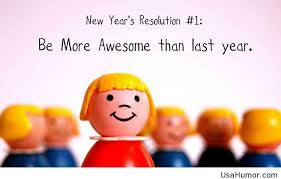 In my last two blog posts, I talked about a USA Today article from John Waggoner titled “Resolutions you can keep,” which I came across during my New Year’s Eve Napa Valley vacation. I previously mentioned there were three important fundraising concepts in the final two column inches of this article that non-profit organizations should take to heart as they start a new year. Last Tuesday’s blog was about sustainable giving strategies, and last Thursday’s post focused on sacrificial giving and upgrade strategies. Today, I am finishing this three-part series with a post about volunteerism.
In my last two blog posts, I talked about a USA Today article from John Waggoner titled “Resolutions you can keep,” which I came across during my New Year’s Eve Napa Valley vacation. I previously mentioned there were three important fundraising concepts in the final two column inches of this article that non-profit organizations should take to heart as they start a new year. Last Tuesday’s blog was about sustainable giving strategies, and last Thursday’s post focused on sacrificial giving and upgrade strategies. Today, I am finishing this three-part series with a post about volunteerism.
So, the third (and final) notable thing that Waggoner said in the final two inches of his newspaper article was:
“If you can’t afford to give money, give your time: The most rewarding way to feed the homeless is by hand. And anything you give to charity will probably leave you feeling better than you did on New Year’s Day.”
Some of you may be wondering how volunteer recruitment, retention and management is related to resource development. The simple truth is that volunteers are a “resource” . The following are just a few of the things volunteers will bring to the table for your organization:
- new ideas
- access to grant opportunities
- specialized skills
- wage replacement costs
- donor dollars
I once read that a study looking at lifetime giving of traditionally cultivated donors compared to donors who started as volunteers found that those who start off as volunteers gave significantly more over their lifetime. This shouldn’t surprise anyone. Volunteers are cultivating themselves better than any of us could do through a site tour, coffee meeting or house party.
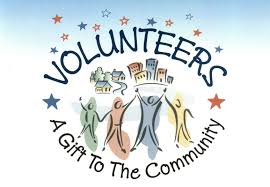 A few days ago, I reviewed a PowerPoint training on a fundraising website that I run for a client. I stumbled across the following startling statistics pertaining to volunteer management:
A few days ago, I reviewed a PowerPoint training on a fundraising website that I run for a client. I stumbled across the following startling statistics pertaining to volunteer management:
- Americans volunteered over 8 Billion hours of service in 2007. Those hours are worth more than $158 Billion (Volunteering in America Study, CNCS)
- Households that volunteer give 40% more to charity than those that don’t volunteer
- 80% of volunteers will give financially if asked
- Fewer than half of the non-profits that rely on volunteers have adopted volunteer management programs
The last bullet point was shocking to me.
If your organization relies on volunteers and doesn’t have a written volunteer recruitment, retention and management plan, then I sincerely hope you take today’s blog post to heart and make it your 2015 New Year’s Resolution to correct this oversight.
Even of your organization isn’t reliant on volunteers, I encourage you to consider doing something in 2015 to change how you approach the idea of volunteerism. Doing so can have a profound impact on your resource development efforts.
The following are a few good links to other resources I think you will find interesting and helpful:
- Energize, Inc: Monetary Value of Volunteer Time
- Carolyn’s Nonprofit Blog: Volunteering and Charitable Giving
- e-Volunteerism: “Incentivizing” Volunteering
- FUNDRAI$INGbank: Volunteer Management Resources
What does your non-profit organization do to attract, retain and manage volunteers? Do you have specific resource development strategies focused on helping volunteers cross that bridge and become a donor? Please scroll down and use the comment box below to share your thoughts and experiences. We can all learn from each other.
Other New Year’s Resolutions?
A good friend, who also happens to be the CEO of a non-profit organization, sent me a nice note last week after reading one of the posts in my “Fundraising New Year’s Resolutions” blog series.
In addition to updating me on some of the progress he’s made with donor stewardship (see the chocolate covered strawberries section of the July 24th post titled “How to ‘surprise and delight’ your non-profit donors“), he also shared with me a new non-profit blog he is following that calls itself “Nonprofit With Balls“.
I’m not joking around, and the truth is that this blog’s post titled “Ten resolutions for the nonprofit sector for 2015” is kick-butt! If you are looking for other ideas for New Year’s resolutions, I encourage you to click-through and check them out. It is definitely worth the click!
Here’s to your health!
Erik Anderson
Founder & President, The Healthy Non-Profit LLC
www.thehealthynonprofit.com
erik@thehealthynonprofit.com
http://twitter.com/#!/eanderson847
http://www.facebook.com/eanderson847
http://www.linkedin.com/in/erikanderson847

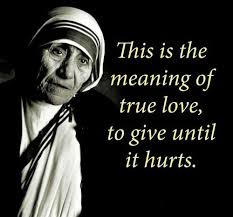 Then, he launched into a story about the importance of what he called “sacrificial giving” and “giving until you can feel a little pinch in your wallet.” The following are just a few of the reasons I recall from that conversation why it is important to give until it hurts:
Then, he launched into a story about the importance of what he called “sacrificial giving” and “giving until you can feel a little pinch in your wallet.” The following are just a few of the reasons I recall from that conversation why it is important to give until it hurts: Your strategy doesn’t have to be complicated. In fact, the following is a simple upgrade strategy that one of my former employers put together:
Your strategy doesn’t have to be complicated. In fact, the following is a simple upgrade strategy that one of my former employers put together: As a donor, I discovered long ago that if I want to make a large contribution to a non-profit organization it probably won’t happen by writing one large check. While some people on this planet have that capacity, my bank account balance isn’t fat enough to do something like Bill Gates or Warren Buffet. However, “large contribution” is a relative term, and I made my first meaningful, sacrificial gift at the age of 27 when I pledged $1,000 to a local Boy Scout council while earning $27,000 working for that same organization.
As a donor, I discovered long ago that if I want to make a large contribution to a non-profit organization it probably won’t happen by writing one large check. While some people on this planet have that capacity, my bank account balance isn’t fat enough to do something like Bill Gates or Warren Buffet. However, “large contribution” is a relative term, and I made my first meaningful, sacrificial gift at the age of 27 when I pledged $1,000 to a local Boy Scout council while earning $27,000 working for that same organization. The United Way figured this one out a long time ago, didn’t they?
The United Way figured this one out a long time ago, didn’t they? Since the Great Recession of 2008, many non-profit organizations have explored and developed monthly giving programs. This strategy has been very popular with European charities, and it is akin to the “set it and forget it” mentality of our society.
Since the Great Recession of 2008, many non-profit organizations have explored and developed monthly giving programs. This strategy has been very popular with European charities, and it is akin to the “set it and forget it” mentality of our society. Happy Holidays, DonorDreams readers! It is Christmas morning and my inner child woke me early. I’ve been sitting on the couch, enjoying a silent cup of coffee, and waiting for everyone to wake up.
Happy Holidays, DonorDreams readers! It is Christmas morning and my inner child woke me early. I’ve been sitting on the couch, enjoying a silent cup of coffee, and waiting for everyone to wake up.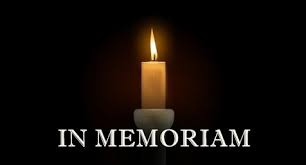 On Saturday, I attended the funeral of my father’s aunt —
On Saturday, I attended the funeral of my father’s aunt — 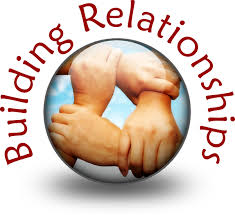 He first started looking for people who had once been loyal supporters but for whatever reason stopped donating. Then he found mutual friends (e.g. board members, former board members, volunteers, donors, etc) and asked them to assist with a re-introduction. On a go-forward basis he simply engaged in relationship building.
He first started looking for people who had once been loyal supporters but for whatever reason stopped donating. Then he found mutual friends (e.g. board members, former board members, volunteers, donors, etc) and asked them to assist with a re-introduction. On a go-forward basis he simply engaged in relationship building.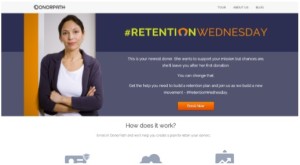
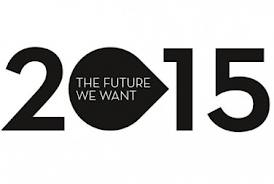 So, I guess I’m feeling a little bah-humbug about the entire idea of #RetentionWednesday. If I were king for a day (a scary thought), I would decree 2015 “The Year of Retention“.
So, I guess I’m feeling a little bah-humbug about the entire idea of #RetentionWednesday. If I were king for a day (a scary thought), I would decree 2015 “The Year of Retention“.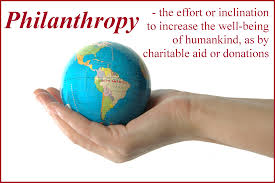 I was on the phone yesterday talking with
I was on the phone yesterday talking with  Our United Way friends totally get an A+ on this one because they’ve been running around for a decade now telling us to LIVE UNITED which encompasses the following ideas:
Our United Way friends totally get an A+ on this one because they’ve been running around for a decade now telling us to LIVE UNITED which encompasses the following ideas: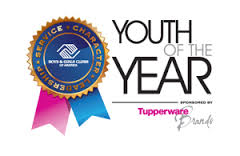 My first Boys & Girls Club national conference was in New York City in 2001 literally months before the terror attacks.
My first Boys & Girls Club national conference was in New York City in 2001 literally months before the terror attacks. Fast forward to one of my first engagements as an external consultant. I was assisting with an organizational assessment and conducting interviews with board members, volunteers, collaborative partners, donors, former donors and various other stakeholders.
Fast forward to one of my first engagements as an external consultant. I was assisting with an organizational assessment and conducting interviews with board members, volunteers, collaborative partners, donors, former donors and various other stakeholders. I often find myself standing in parking lots after meeting “kicking stones” with staff, board members, volunteers, etc.
I often find myself standing in parking lots after meeting “kicking stones” with staff, board members, volunteers, etc. Last night I had the privilege of being invited to a non-profit organization’s year-end holiday party stewardship event. In attendance were board members, capital campaign volunteers, auxiliary members, and various other stakeholders. There was no solicitation presentations, but there were a few powerful testimonials from alumni and lots of gratitude. The energy in the room was palpable, and I was reminded me of the old expression that “hope floats“. It was in this dynamic setting that I had an amazing conversation with someone about the power of leadership.
Last night I had the privilege of being invited to a non-profit organization’s year-end holiday party stewardship event. In attendance were board members, capital campaign volunteers, auxiliary members, and various other stakeholders. There was no solicitation presentations, but there were a few powerful testimonials from alumni and lots of gratitude. The energy in the room was palpable, and I was reminded me of the old expression that “hope floats“. It was in this dynamic setting that I had an amazing conversation with someone about the power of leadership. The following is a list of competencies and skill sets the search committee reviewed during its search criteria conversations:
The following is a list of competencies and skill sets the search committee reviewed during its search criteria conversations: We are just a few days away from Thanksgiving, and I’m getting in touch with my gratitude muscles this week. If you’re anything like me then you’re probably a “lifelong learner” and love to read about bigger and better ways to engage donors and practice the art of resource development. One of the ways I feed my need to learn is reading other non-profit bloggers. Today’s post is dedicated to some of my absolute favs.
We are just a few days away from Thanksgiving, and I’m getting in touch with my gratitude muscles this week. If you’re anything like me then you’re probably a “lifelong learner” and love to read about bigger and better ways to engage donors and practice the art of resource development. One of the ways I feed my need to learn is reading other non-profit bloggers. Today’s post is dedicated to some of my absolute favs. Thanksgiving is a time when many non-profit organizations give thanks to their donors who support their mission with their time and money. Over the years, I’ve received Thanksgiving cards, thank-a-thon phone calls, and even a small little gift of gratitude from my favorite charities. However, the ALS #IceBucketChallenge has changed everything and set the bar higher for all resource development activities. So, I’ve spent days (if not weeks) thinking about how to use social media to steward donors during this time of the year. This morning I think I had my best idea yet. Let’s see what you think.
Thanksgiving is a time when many non-profit organizations give thanks to their donors who support their mission with their time and money. Over the years, I’ve received Thanksgiving cards, thank-a-thon phone calls, and even a small little gift of gratitude from my favorite charities. However, the ALS #IceBucketChallenge has changed everything and set the bar higher for all resource development activities. So, I’ve spent days (if not weeks) thinking about how to use social media to steward donors during this time of the year. This morning I think I had my best idea yet. Let’s see what you think. AND THEN IT HAPPENS . . .
AND THEN IT HAPPENS . . . If there is one thing all of us should’ve learned from the ALS #IceBucketChallenge, it is that social media is a powerful tool in our resource development toolbox. While we’re all still learning how to use this tool, those who innovate and try new things will surely reap the rewards.
If there is one thing all of us should’ve learned from the ALS #IceBucketChallenge, it is that social media is a powerful tool in our resource development toolbox. While we’re all still learning how to use this tool, those who innovate and try new things will surely reap the rewards.